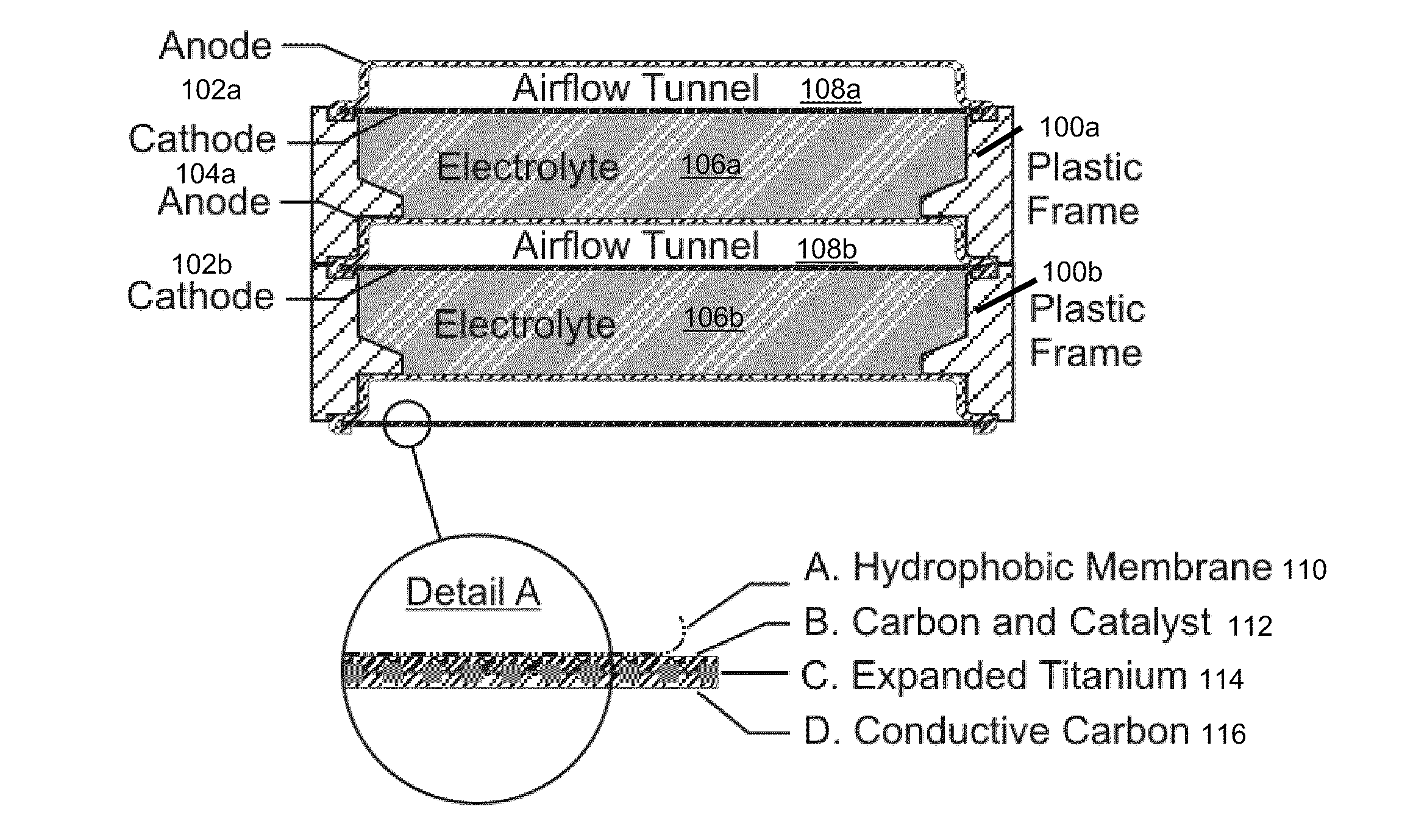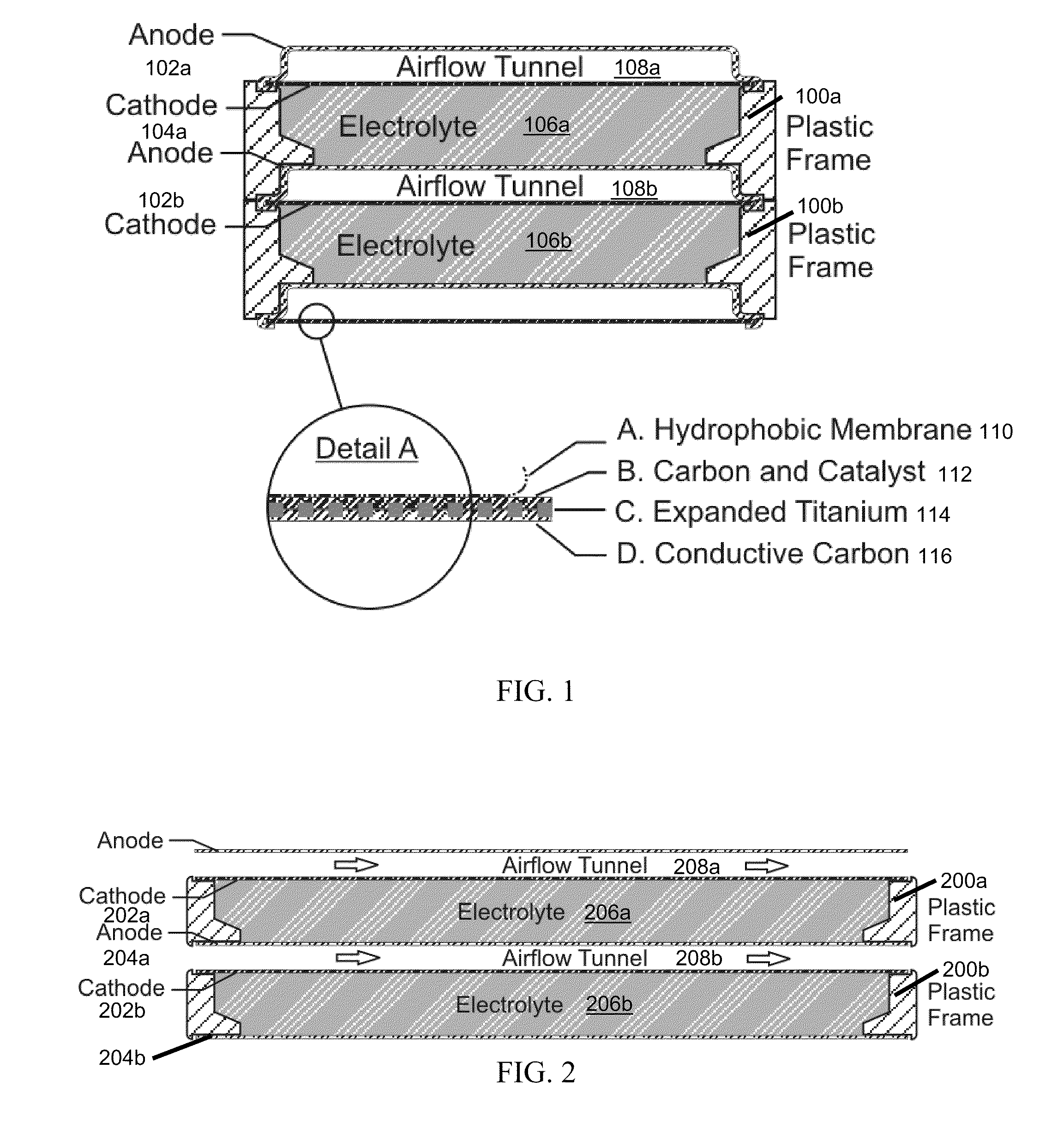Electrically rechargeable, metal-air battery systems and methods
a battery system and metal air technology, applied in the field of electric rechargeable, metal air battery system and methods, can solve the problems of not being versatile or useable as true storage devices, no battery system has been a commercial success, and not being as versatile or practical as existing battery systems, so as to achieve the effect of long life, affordable and practicality
- Summary
- Abstract
- Description
- Claims
- Application Information
AI Technical Summary
Benefits of technology
Problems solved by technology
Method used
Image
Examples
example
[0315]In one example, a test cell may have been provided. FIG. 13 shows an example of cell voltage over test time in accordance with an embodiment of the invention. A test time of 350000 seconds was provided to demonstrate that the systems works.
[0316]A stable voltage range resulted with the early test cell. There was no physical degradation in the early version of the cell. For example, as shown in FIG. 13, the voltage remained relatively stable for 350000 seconds. For the most part, the voltage cycled between 0.9 and 2.1 volts.
PUM
| Property | Measurement | Unit |
|---|---|---|
| fixed distance | aaaaa | aaaaa |
| hydrophobic | aaaaa | aaaaa |
| corrosion | aaaaa | aaaaa |
Abstract
Description
Claims
Application Information
 Login to View More
Login to View More - R&D
- Intellectual Property
- Life Sciences
- Materials
- Tech Scout
- Unparalleled Data Quality
- Higher Quality Content
- 60% Fewer Hallucinations
Browse by: Latest US Patents, China's latest patents, Technical Efficacy Thesaurus, Application Domain, Technology Topic, Popular Technical Reports.
© 2025 PatSnap. All rights reserved.Legal|Privacy policy|Modern Slavery Act Transparency Statement|Sitemap|About US| Contact US: help@patsnap.com



